Who are we?
Werribee Rifle Club is a visitor-friendly shooting club operating at the Mackereth Rifle Range which is part of the Werribee International Shooting Complex Inc. 1225 Ballan Road, Quandong which is a 10-minute drive from Werribee CBD.
The club offers a range of disciplines relevant to the skill of long-range target shooting. The sport allows licensed shooters to use target rifles in competition at distances from 300 to 800 yards. The disciplines of Target Rifle, F Class and Match Rifle are all enjoyed by a diverse cohort of members.
The club aims to promote, develop and increase the knowledge and skill in the sport of Target Shooting regardless of age, gender, experience or skill. This will be provided in an environment that teaches the safe handling and responsible use of firearms.
As a club, we believe that shooting should be an enjoyable social activity, and not a boot camp so we conduct ourselves appropriately. That’s not to say that we aren’t competitive as we also maintain a healthy club championship competition and participate in inter-club competitions.
Facilities at the Mackereth Rifle Range
The Mackereth Rifle Range has 6 targets. These use the Silver Mountain electronic scoring system.
Tea, coffee, cold drinks and lunch-time sausages are available for a small fee.
The clubhouse provides separate modern male and female toilets, with showers.
Cafes & shops are only a few minutes drive away (Manor Lakes shopping centre, 5 km).
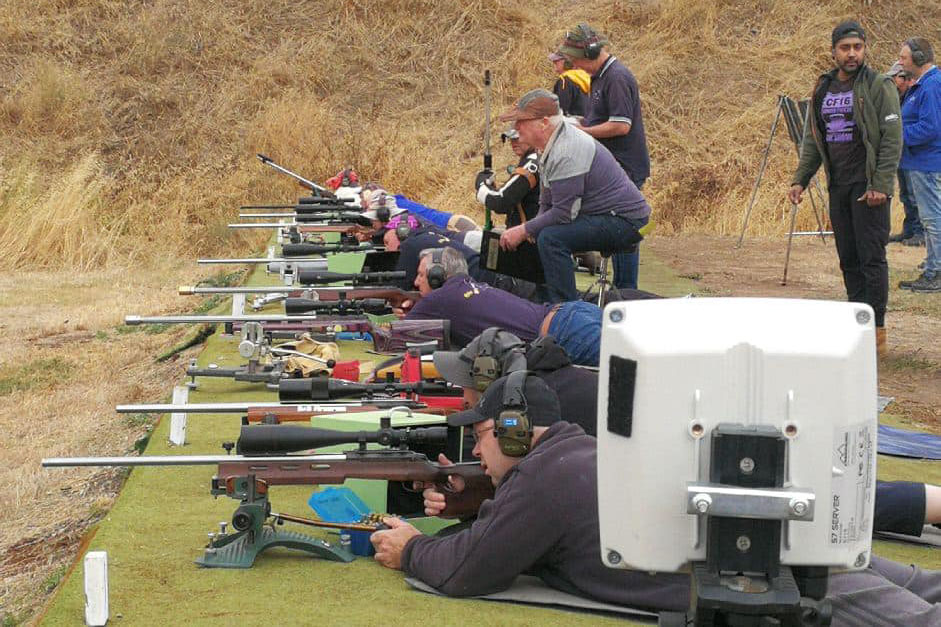
Club History
Werribee Rifle Club
The Werribee Rifle Club was formed in 1902 and has been operating at the Mackereth Rifle Range since 1990. The Werribee Rifle Club was first formed over a century ago (1902) but like a number of other clubs, it has had several interruptions in its history. It has used 5 different ranges in the Werribee/Point Cook area over that time.
First range:
When formed in 1902, the club used the Metropolitan Farm rifle range at Werribee.
Second range:
A range was built on the property of G Chirnside at Horseshoe Bend on the Werribee River, and made available for club use by Mr Chirnside. This gave the club its own range, which was ready for use by May 1906. During interclub competitions, competitors reached the range by boat! Only 3 years later, the club decided to amalgamate with the Metropolitan Farm Club, so shooting at this range ceased on 24 Feb 1910, and the members returned to using the Metro Farm range until the start of WW1. After WW1, the Soldier Settlement scheme closed the range, and the club was disbanded.
Third range:
The club reformed in 1953. A new range was built on the property of M & T Cunningham and opened on 24 Aug 1957. Well-known shooters Paddy Mark (father of Olympic gold medallist Russell Mark) and Jack Richmond joined in 1958. There were a number of State team members in the club, and the club generally performed well over the next few decades, with multiple wins in the District Rifle Association inter-club matches.
Fourth range:
In 1981, The Club moved to Werribee South (near the Pt Cook RAAF base). Members used the Point Cook range for only a few years up until October 1984. The clubhouse is still standing, although unused.
Fifth range: The closure of the Point Cook Range marked a new beginning. The Werribee International Shooting Complex Inc (WISCI), of which the rifle range is only a part, was started in 1986 at a site on Ballan Road in Quandong (near Werribee), where it has continued to the present. The site is divided up into contiguous areas for the rifle range, the clay target range, and several handgun ranges.
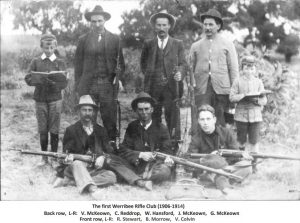
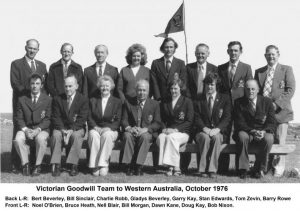
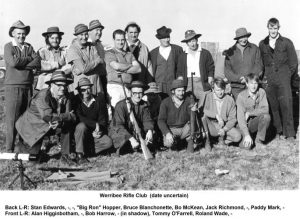
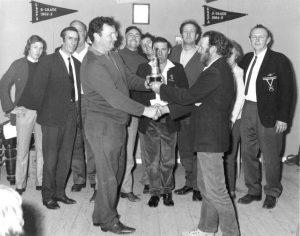
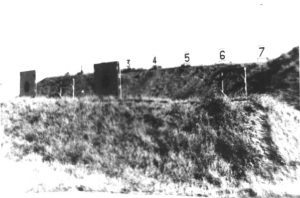
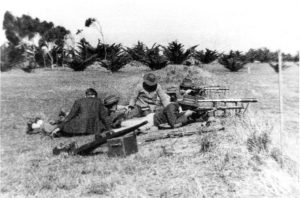
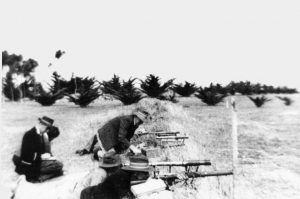
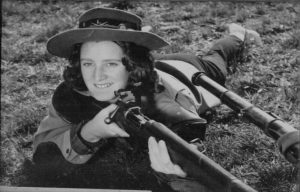
Social and historical points of interest:
Old articles and newspaper cuttings which have survived the migrations of the club provide some insights into the culture of the times. Full-bore shooting has always been a largely rural sport as it cannot be conducted in built-up areas. Local land-owners were often instrumental in providing the necessary land, roads and other facilities to allow clubs to form.
Women were well represented from the beginning, as they can compete to the same level as the men, but in keeping with the greater segregation of all women’s activities in those times, the women’s teams at State and National level were kept separate from the men’s teams. The Werribee club had one influential female member, Nell Blair, who was Captain of the Victorian Women’s Team for 9 years, a member of the Australian Women’s team competing in Sydney in 1976, as well as being the VRA Treasurer and the first female VRA Councillor in 1978.
The other strong tie that always existed was to the military. At the outbreak of WW1, the rifle club members were used to train Army recruits, many of them new to using a rifle, before the recruits were sent overseas to use their rifles in earnest. After WW1, an Oath of Allegiance had to be taken before membership could be granted in any rifle club, which effectively made rifle club members part of the Army Reserve, and members could in principle be “called up” to fight. At that time, Australians did not expect to be defending their own country if called up, but would be posted overseas to fight on behalf of British imperial interests. Although many of the State and national representatives of the rifle clubs supported this idea, the rank and file members did not. Here is a copy of the Oath of Allegiance from the club’s records. Shooters today might be envious of the political clout wielded by the rank-and-file members of rifle clubs after WW1. They succeeded in blocking attempts to make the civilian clubs into a militia that the Army could control, and by 1921 the control of civilian clubs by the Army had ceased.
Local communities feel the impact of wars for many decades after the event, and often create architectural or sculptural reminders of those events. In Werribee, we have a living alternative: the dozens of Aleppo Pines growing along the Ballan Road frontage of the WISCI complex. Seeds from the “Lone Pine” that stood high above the trenches at Gallipoli were brought home by Australian soldiers, and descendants of that tree are planted as memorials in various sites around the country, including the Australian War Memorial and this collection around the Werribee rifle range.
Finding land and finances for this specialised sport, with its requirement for a large area of unoccupied land, has never been easy and has often been dependent on finding generous sponsors. The current WISCI site in Quandong was acquired only after funds were donated by Glen Mackereth & the Victorian Gun Club. For this reason, it has become the local tradition to refer to the Quandong range as the “Mackereth range”. Glen Mackereth was still an effective competitor at the age of 76, when he won a competition at the Point Cook range, which was the home range for the club at that time. Scores published in a short newspaper report of the award ceremony Glen Mackereth’s win showed that a close contender was Bill Austin, who is still with the club as a Life Member.
Once formed, clubs often raise funds for charity through competition shoots. One such event at the Point Cook range in 1979 was won by Bill Austin, who continues to shoot well in F-Open competitions, 40 years after his win at Point Cook! Another interesting event was a Prize Meeting on 29 November 1981, for which Tino’s Ballan Holden of Werribee were the sponsors. They offered the prize of a Holden Commodore for anyone who achieved a very high pre-set score. The coveted prize was not won.
